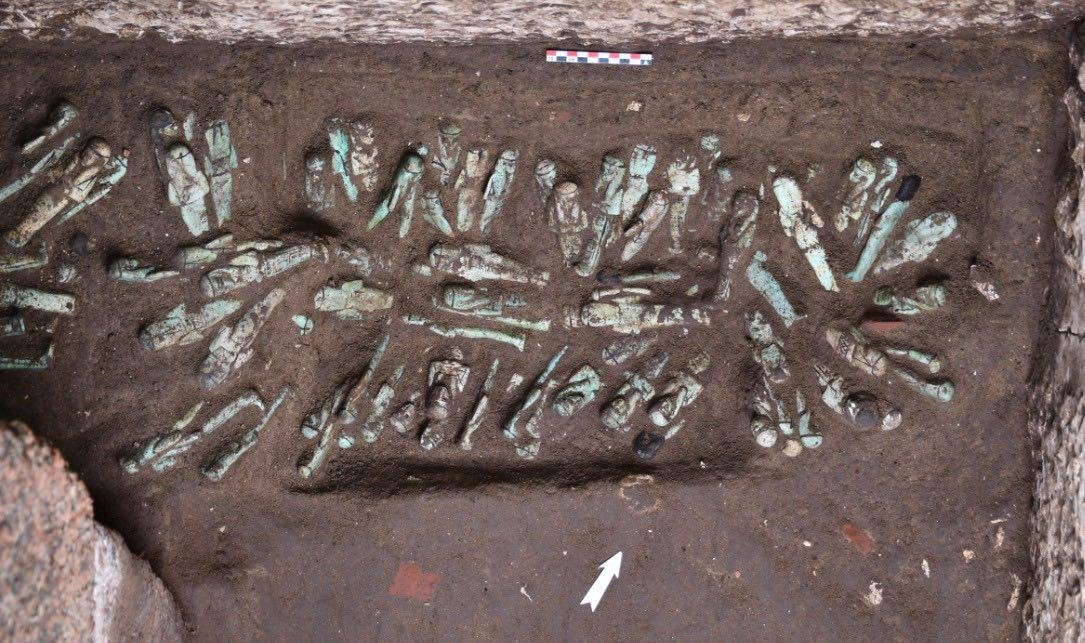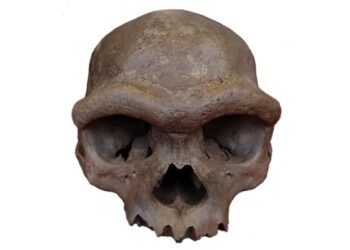The archaeologists excavating in the royal necropolis of Tanis have made a discovery that rewrites the history of Egypt’s 22nd Dynasty, long recognized for yielding some of the most remarkable treasures of the Third Intermediate Period. A French mission working with Egyptian authorities has unearthed 225 ushabti figurines that once belonged to King Sheshonq III, offering fresh clues to royal burial traditions and solving a decades-old mystery surrounding an uninscribed granite sarcophagus.

The discovery was made during a careful cleaning of the northern chamber of the tomb of Pharaoh Osorkon II at San el-Hagar, the site of ancient Tanis. The figurines were still in their original position, covered in silt, alongside the previously anonymous sarcophagus. Their context provided critical evidence for the identification of the coffin as that of Sheshonq III, a significant ruler whose long reign left a visible architectural mark on Tanis, the northern capital of his dynasty.
The scale and significance of the discovery have been described as unmatched in the royal tombs of Tanis since 1946. For years, the granite coffin had been an unsolved puzzle; now, its attribution to Sheshonq III clarifies an important chapter in the city’s funerary landscape. This breakthrough also opens another set of questions.
Researchers are now looking into whether the king was interred directly in the chamber of his predecessor Osorkon II or if his burial goods were relocated there later in an effort to save them from tomb robbers—an issue that might reshape current understanding of royal burial strategies in a politically fragmented era.

It wasn’t, however, the end of the work that the team had done. The newly discovered inscriptions and carvings in the same chamber promise to further expand scholarly knowledge of how the royal necropolis was reused and adapted over time. These will undergo detailed study as part of the next research phase, which may reveal further insights into the circumstances of Sheshonq III’s burial.
The find also constitutes part of a larger project to preserve the tombs at Tanis. Archaeologists are preparing to place a protective covering over the structure, reduce damaging salt levels, and clean architectural features above and below ground. Their work represents the latest in a decades-long tradition of Franco-Egyptian collaboration at the site, begun in 1929.

Tanis first gained worldwide attention in 1939, when excavations unearthed the so-called “Treasures of Tanis,” an assemblage rivaling the splendor of the burial goods of Tutankhamun. With the reappearance of Sheshonq III’s funerary figurines and the solution to the mystery of the sarcophagus, this site once again shows its remarkable ability to shed light on one of ancient Egypt’s more obscure periods.
More information: Ministry of Tourism and Antiquities
























Comments 0